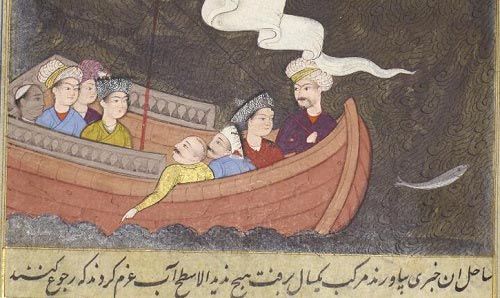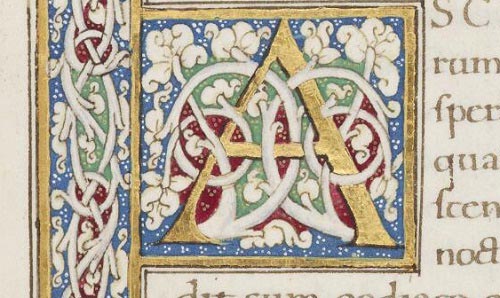(2)Resized.jpg)
Southeast Asia and Australasia Collections
The Southeast Asian manuscripts cover a wide variety of cultures, languages and scripts, physical formats and decorative styles.
.jpg)
Manuscript collections encompass Tibetan, Burmese, Siamese (Thai), Malay, Batak, Buginese, Balinese, Madurese, Javanese, Kawi, Makarese and Pali. They include concertina books, paintings and drawings, calligraphy, book-binding, xylographic printing and manuscripts written on a range of materials including bark, palm leaf, bamboo, paper, metal and bone.
The broader collections encompass original documents, art and photographs, as well as printed books and maps relating to Southeast Asia and Australasia. The holdings encompass literature, music, art, religion, science and medicine, history, politics and sport.
Languages and writing traditions
Palm leaves were used to copy manuscripts in South and Southeast Asia for about 2000 years. The palm-leaf manuscripts cover a wide range of subjects such as medicine, astrology, law, music and literature, and Buddhism. The largest group is the Pali manuscripts, collected by Professor T. W. Rhys Davis. The Pali manuscripts comprise 83 items dating from the 17th-19th centuries, mainly on palm leaf but also on paper and lacquer. About a third of the collection derives from Myanmar (Burma) and a few are from Cambodia. There are also palm-leaf manuscripts in the languages of Myanmar, Thai, Sanskrit and Mon. Most of the palm leaves are inscribed and stained with an oil-based ink, but some are painted or even gilt.
The Library holds over 60 manuscripts in Indonesian languages, mostly dating from the 18th-19th centuries, including the largest collection in Britain of Batak manuscripts from Sumatra. The 33 Batak manuscripts are predominantly bark books (pustaha), works of divination and magic used by the Batak ritual specialists (datu). There are 25 Javanese manuscripts, some illustrated in the wayang style associated with Javanese puppet performances. The texts represent a diverse range of literary and historical influences, including Javanese literature, versions of Sanskrit texts and Islamic traditions. There are smaller collections of manuscripts in Malay, Balinese, Buginese, Madurese, Kawi and Makasarese.
Manuscripts from Mainland Southeast Asia encompass texts in Myanmar (Burmese), Thai and Pali (in Burmese, Thai and Khmer scripts). There are also two manuscripts in Mon and a single Shan manuscript. Most are 19th century but a few date back to the 17th century. The manuscripts largely reflect Buddhist cultures, but include grammatical, magical, astrological and literary works. About half the manuscripts are inscribed on palm-leaf; there are some important illustrated concertina books (parabuik).
Religious traditions
The collections reflect the strength and diversity of Buddhism in Southeast Asia, and include a range of religious, historical and literary texts, particularly amongst the Pali Manuscripts. The highlight is a Khmer Pali manuscript of extracts from the Buddhist Tripitaka, comprising seven large bundles of palm leaves with carefully incised letters, each secured in wooden covers inlaid with elaborate designs in mother-of-pearl and wrapped in coloured silk woven with gold. There are also depictions of Buddha in manuscripts, printed lithographs and paintings.
Indonesian manuscripts contain texts associated with a variety of religious traditions. The Batak manuscripts reflect the religious traditions of the Batak people of Sumatra, in particular the knowledge and practices of the ritual specialists (datu), such as divination, protection and healing. Islam is represented by manuscripts in Javanese, Malay and Buginese, and in a Southeast Asian manuscript of the Qur’ān.
The Thomas Raffles Collection contains material relating to Christian missions in 19th-century Southeast Asia, Australia and the South Pacific, including documents concerning the conversion to Christianity of the Tahitian royals. There are printed bibles in many Southeast Asian languages, including Burmese, Javanese, Makassar, Malay, and in a range of Austronesian languages.
History
In addition to local and regional histories in manuscripts and books, the Rylands holds some original documents from Southeast Asia, relating primarily to trade and politics. These include Malay and Javanese letters and documents, while the collection formed by the Dutch scholar Johannes Heyman (1667-1737) contains letters in the Ternate language. However, the majority of historical documents relating to the region represent European interests.
As a historical resource, the Eurocentric collections described below reflect the racism of the era in which they were created, and contain material that can be offensive, violent and oppressive. The University of Manchester rejects the practices and beliefs represented in these collections, but we are committed to providing access to them as evidence of the inequalities and attitudes of the time. We encourage people to use these collections in ways that challenge continuing inequalities.
Representations of the region stretch back to 1546, in a manuscript map of the world by Pierre Desceliers showing Indonesia and parts of Australia. The unique manuscript journal of James Colnett documents a voyage into the Pacific Oceans in 1793-4. From the 17th century onwards, there are printed maps and books of travels and voyages, ethnography, linguistics and philology. The Mills and Booker Map Collections contain French and Dutch maps of Asia and the Far East.
Personal papers cover a range of European experiences in Southeast Asia and Australasia during the 19th century. There is an important collection of notebooks and photographs compiled by William Stanley Jevons, assayer for the new Australian mint 1854-1859. Papers of the philosopher Samuel Alexander (1859-1938) refer to his early life in Australia, while the autobiography of Manchester-born Arthur Henry Gibson (b. 1861) offers a unique insight into the life of an emigrant farmer in Ngaio, New Zealand. The Bowring Papers relate to the British ‘Siamese mission’ to Thailand in the early 1850s and the E. H. Parker Papers include documents and photographs relating to Burma, where Parker was adviser to the Indian government on Chinese affairs from 1892 to 1893. Papers of zoologist Sydney John Hickson (1859-1940) include diaries and a sketchbook from his expedition to Makassar (Sulawesi) in the 1880s, while the photographs and papers of the ethnographer Henry Ling Roth (1855-1925) reflect his wide-ranging interests in the archaeology and material culture of the indigenous people of Australia, Africa, the Caribbean and Southeast Asia.
Archive collections in the Rylands document the impact of the Second World War in the region. A group of five archives associated with Major-General Orde Wingate (1903-1944) relate to operations of the Chindits (special-operations units of the British and Indian armies) in the Burma Campaign of 1943-4. The Papers of Field Marshal Auchinleck (1884-1981), a British Army commander, include documents relating to Australian and New Zealand troops serving in the Southern Mediterranean, French and Dutch forces in post-war Indo-China and Indonesia, and changes of government in Australia. The Manchester Guardian Archive includes private dispatches about the Burma Campaign, as well as correspondence about Australian politics and sport.
List of collections
Physical collections
- Samuel Alexander Papers
- Auchinleck Papers
- Booker and Mills Map Collections
- Bowring Papers
- James Colnett, A Voyage for Whaling and Discovery round Cape Horn into the Pacific Oceans
- Crawford Collection
- Autobiography of Arthur Henry Gibson
- Guardian (formerly Manchester Guardian) Archive
- Sydney Hickson Papers
- Jevons Family Papers
- Dorman O’Gowan Papers
- Pali Manuscripts
- Thomas Raffles Collection
- Henry Ling Roth Papers
- South-East Asian Manuscripts
- Tibetan Manuscripts
- Orde Wingate Collections
Digital collections
- Guardian Collection in Library Digital Collections
- Jevons Family Papers in Library Digital Collections
- Maps Collection in Library Digital Collections
Further information
Related subject pages
- Ahmed Iqbal Ullah RACE Centre Collections
- East Asia Collections
- Collections for the History of the Book
- Military, Colonial and International History Collections
- Religion and Theology Collections
- South Asia Collections
Finding aids
- Trove Australian Joint Copying Project
Rylands blog posts
- A Tribute to Clare Hollingworth
- Creative Responses to the Carcanet Email Archive
- Four Maps of New Zealand: The General Survey Office and imperial tourism
- Henry Ling Roth and The Aborigines of Tasmania
- New teaching resource on the creative process of poet John Gallas
- South Asian Heritage Month Collection Close up: Preserving Palm Leaf – A Sacred Manuscript Tradition
- South Asian Heritage Month Collection Close Up: Tales of Panji

Exploring subject areas
An overview of our Special Collections, including information about the background and history of our holdings.

Special Collections A-Z
Explore the Special Collections through the collection names and descriptions using our searchable A-Z tool.
